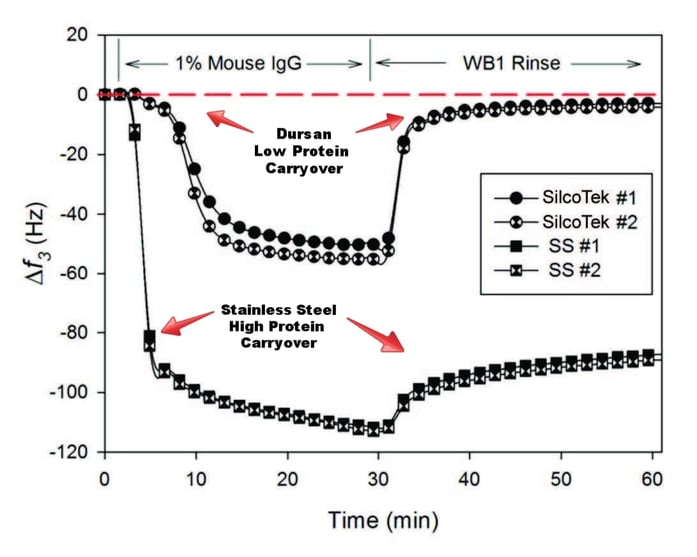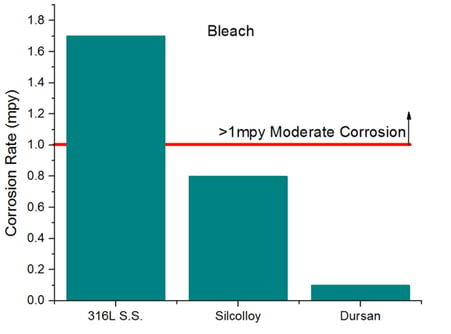
Have a coating question? Just ask the expert. We did and learned a lot!
I spent the better part of my early school years sitting at the back of the classroom looking down hoping to avoid being asked a question. Even worse, the thought of raising my hand and asking a question was enough to make me want to wish for gym class. The thought of the class laughing at my stupidity clammed me up pretty quickly. Ugh, grade school.... No laughter here though! Just good questions answered by qualified and really smart people. We started the Ask The Expert program to address coating questions targeted at both the informed coating user and people new to the coating process.
This week we cornered R&D scientist, Dr. David Smith, and asked him some insightful (hopefully) questions about bio-inert coatings for medical applications. Read on and if you have a question, ask!
|
In this blog post you will learn:
- How CVD coatings improve medical diagnostic equipment performance
- How Dursan can improve corrosion resistance in high tolerance narrow bore tubing and needles
- How bio inert coatings prevent test errors.
|
Have a Bio-inert Coating Question? Read on.
What problems do medical applications face in clinical diagnosic applications?
If the target analyte or test chemical taken during medical analysis adheres to the sampling or analytical component flow path, there can be inaccurate results. Any of the following issues can lead to results that adversely affect the proper diagnosis, and therefore health of a patient:
- Lost or limited detection due to protein binding
- Carryover of analyte proteins released after rinsing during the following test.
- Adsorption or reactivity of flow path surfaces causing abnormally low test readings or calibration errors.
- Corrosion of flow path surfaces causing pitting and providing hiding places for test compounds to carryover to following tests.
Here's an example of protein carryover. In this example (published in Applied Surface Science by Abbott Laboratories and SilcoTek®), 1% mouse IgG was applied to a Dursan® coated test surface and an uncoated stainless steel surface. Protein levels were measured before and after rinse to measure carryover. The results below show the stainless steel (lower line) retained protein while the Dursan surface exhibited low protein carryover.

Read the entire study conducted by Abbott Labs and SilcoTek®.

What makes SilcoTek coatings a good solution to these problems?
Stainless steel is a common substrate used throughout medical analytical equipment, but stainless steel is known to be highly adsorptive to many chemical compounds and is susceptible to corrosion when exposed to acids, salt solutions, and bleach.
2 Key Benefits to using an inert CVD barrier coating in medical diagnostic flow paths:
- Unsurpassed inertness improving analytical reliability and eliminating carryover.
- Our coatings provide barrier protection from corrosion, extending the lifetime of substrates and reducing the risk of downstream metal ion contamination.
Here's an example of how barrier coatings can improve corrosion resistance in precision flow paths like needles. Bleach is an effective cleaning agent but can damage stainless steel flow paths. 72 hour bleach immersion tests show significant corrosion of the stainless steel surface. The Dursan coated stainless steel surface (right bar) reduces the corrosion rate by an order of magnitude or more.

Which coating would you recommend in a medical application and what are the specific benefits?

Dursan has been studied to show an extremely high degree of chemical inertness when analyzing biomedical components such as bovine serum albumin (BSA), Mouse immunoglobulin G (IgG), and normal human plasma proteins.1 Dursan components are also highly corrosion resistant in acidic and bleach solutions. You can read more about how to prevent carryover by reading the Abbott study published in Applied Surface Science. Click on the thumbnail to get the study.
Are there other competitive coatings for medical applications? How does Dursan compare?
A common coating used by the biomedical field is PTFE (polytetrafluoroethylene), but Dursan® outperforms it in many ways.
| Dursan® |
PTFE |
Good wear resistance
Will not delaminate Chemically inert
Resistant to corrosive attack
Thermally stable up to 500°C |
Relatively soft
Can delaminate
Chemically inert
Resistant to corrosive attack
Thermally stable up to around 200°C |
Click on the button below to read more about how PTFE compares to inert CVD silicon coatings.
Is there anything else you would like to share about SilcoTek’s Dursan coating?
If there is a need for an inert, robust, thermally and chemically stable surface that resists adsorption of proteins and other bio-based molecules, Dursan may be the coating that will help provide a level of system performance that was never thought to be possible. To make your medical diagnostic device true-to-test read more about our medical applications for Dursan and our other CVD coatings.


David Smith, Ph.D. is SilcoTek’s R&D Manager and a founding member of the company. With over 20 years of experience in developing CVD coatings, David focuses on turning customers’ toughest material challenges into real solutions for industrial applications. He holds numerous patents relating to CVD coatings and surface material science.

1Vaidya, S.V., Yuan, M., Narvaez, A.R., Daghfal, D. Mattzela, J., Smith, D.A. “Protein-resisitant properties of a chemical vapor deposited alkyl-functional carboxysilane coating characterized using quartz crystal microbalance” Applied Surface Science 364(2016) pp.896-908.









